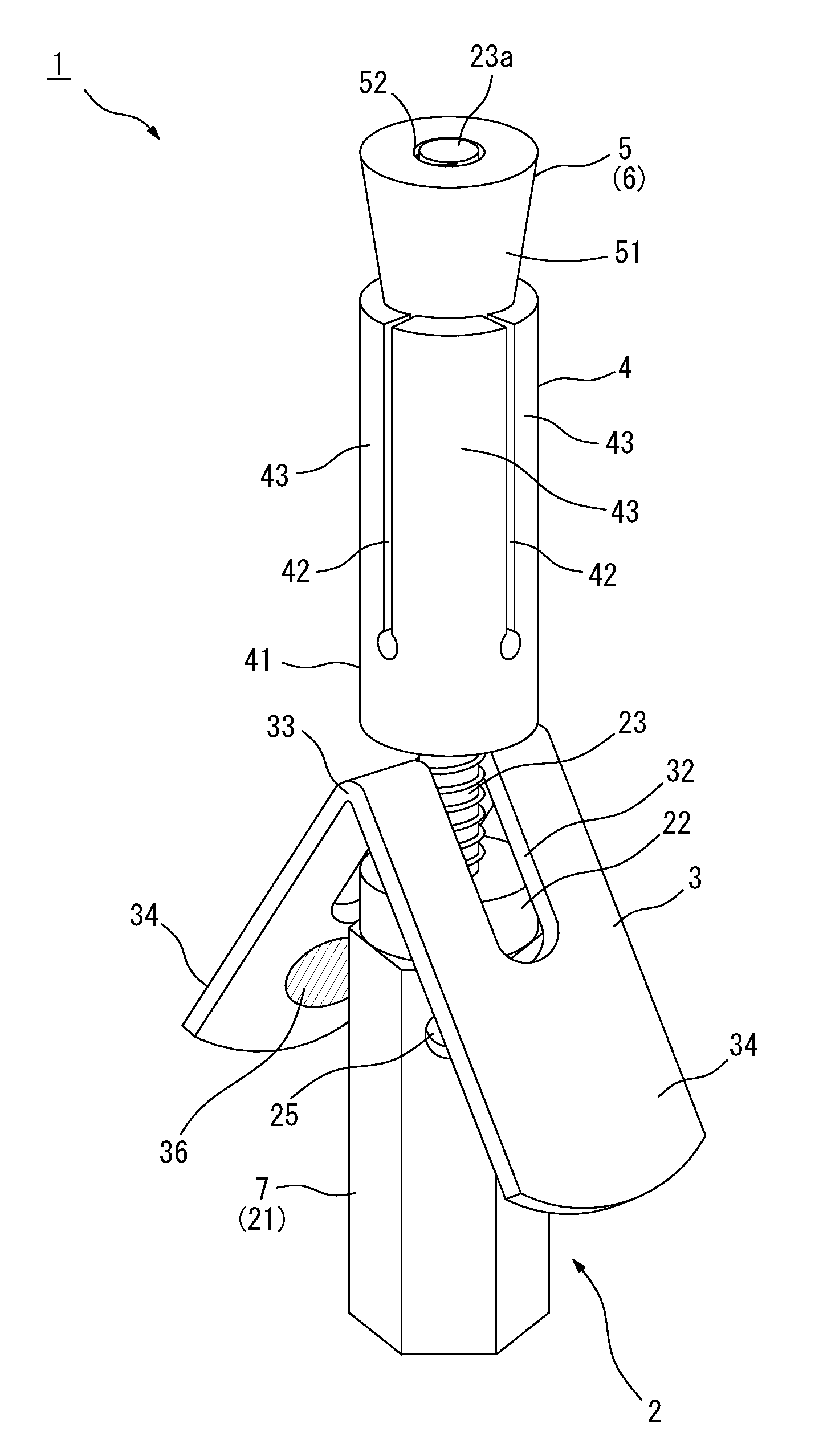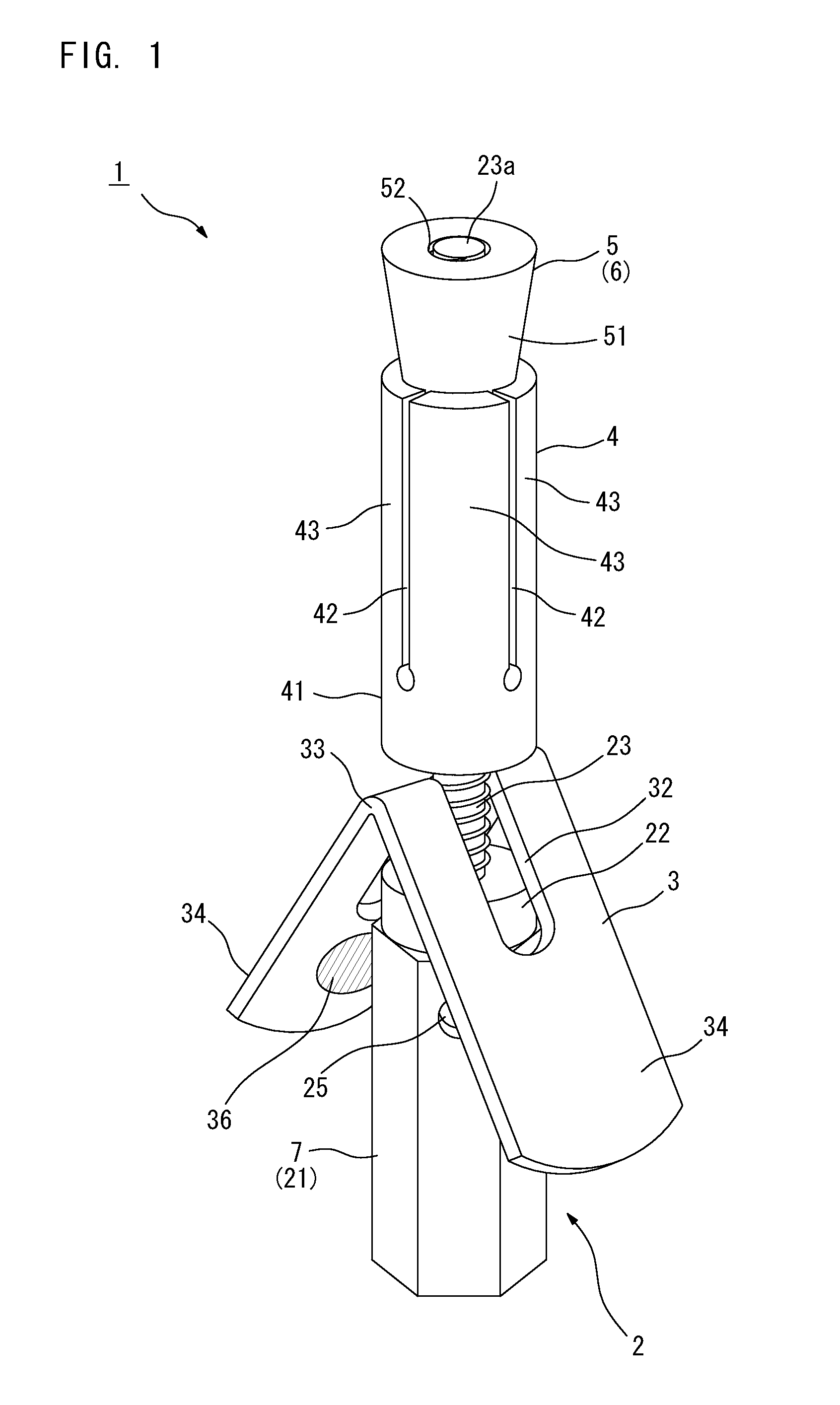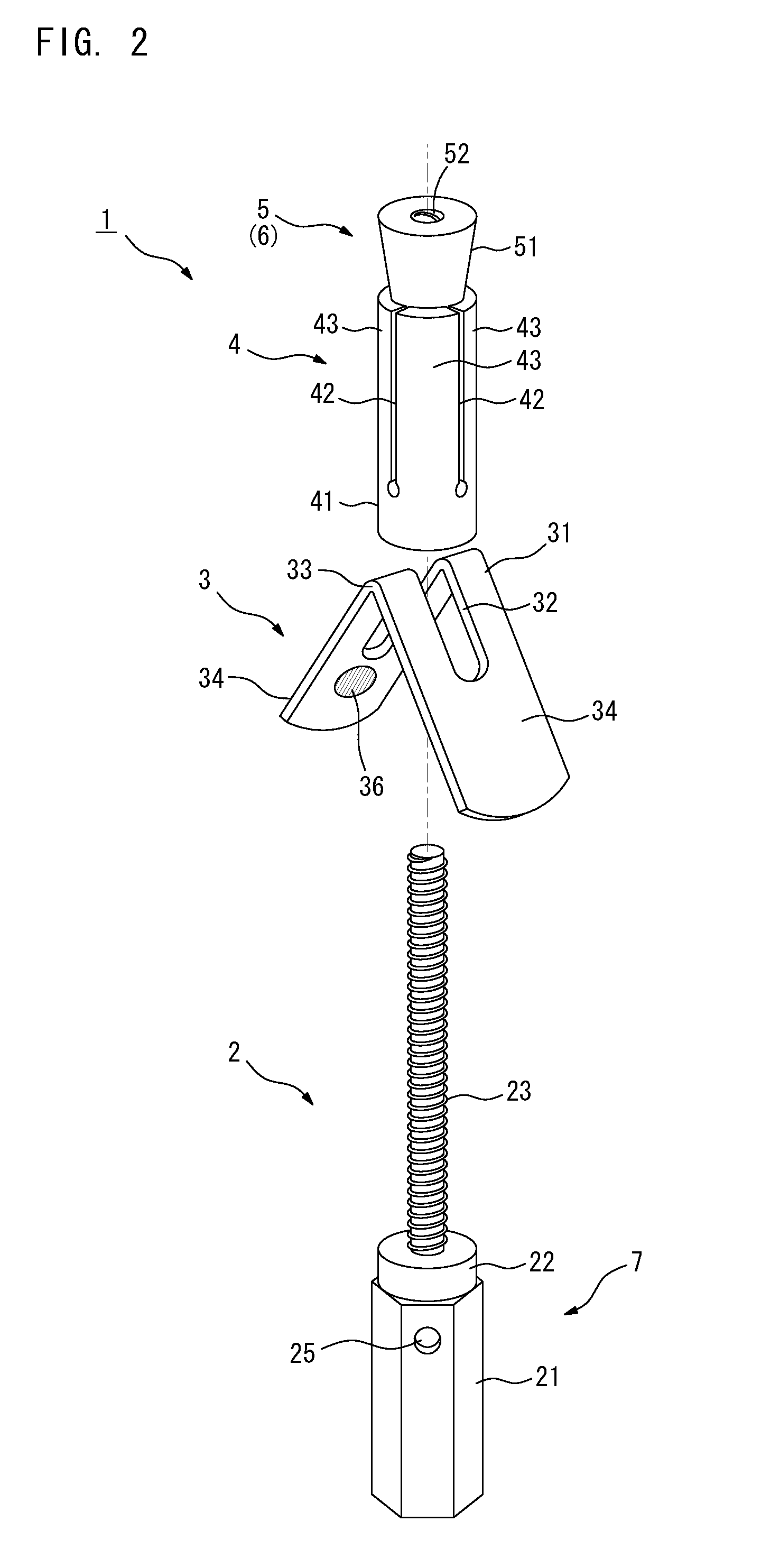Anchor
a technology of anchors and fixing rods, applied in the field of anchors, can solve the problems of greater distance between the eyes of the worker and the anchor, the anchor disclosed in the patent literature 1 is not suitable for fixing to the ceiling structure, and the tip portion of the steel bar is integrated with the tip portion of the ceiling structure, so as to achieve the effect of easy checking the placement condition of the anchor
- Summary
- Abstract
- Description
- Claims
- Application Information
AI Technical Summary
Benefits of technology
Problems solved by technology
Method used
Image
Examples
first preferred embodiment
[0045]FIG. 1 is a perspective view showing an anchor 1 of a first preferred embodiment of the present invention with all parts of the anchor 1 assembled. FIG. 2 is a perspective view of the anchor 1 with all the parts of the anchor 1 separated. FIG. 3 is a longitudinal sectional view of the anchor 1 with all the parts of the anchor 1 assembled.
[0046]The anchor 1 of the first preferred embodiment includes an anchor bolt 2, a V-shaped expansion member 3, a spreading sleeve 4, and a cone nut 5. The anchor 1 is to be attached to various types of skeletons such as concrete buildings and structures, and is suited for attachment especially to ceiling structures.
[0047]The anchor bolt 2 includes a shaft part 23 of a predetermined length that has a tip portion with a male screw thread. The anchor bolt 2 also includes a rotation control section 7 at its base portion for causing the shaft part 23 to rotate. The rotation control section 7 is constructed of a prismatic nut part 21 of a predetermi...
second preferred embodiment
[0072]A second preferred embodiment of the present invention is described next. FIG. 9 is a perspective view of an anchor 1a of the second preferred embodiment with all parts of the anchor 1a separated. As shown in FIG. 9, the anchor 1a of the second preferred embodiment includes an anchor bolt 2, a V-shaped expansion member 3, a spreading sleeve 4, and a nut member 27. Like the anchor 1 described above, the anchor 1a is to be attached to various types of skeletons such as concrete buildings and structures, and is suited for attachment especially to ceiling structures. The anchor 1a of the second preferred embodiment differs from the anchor 1 of the first preferred embodiment in that the anchor bolt 2 and a rotation control section 7 have different structures. The structures of the expansion member 3 and the spreading sleeve 4 are the same as those of the first preferred embodiment. The difference of the second preferred embodiment from the first preferred embodiment is described be...
third preferred embodiment
[0081]A third preferred embodiment of the present invention is described next. The main structure of the anchor of the third preferred embodiment is substantially the same as that of the anchor 1 of the first preferred embodiment. The difference of the anchor 1 of the third preferred embodiment from one of the first preferred embodiment is a deformable material 9 provided at the bottom portion of the screw hole 24 defined in the anchor bolt 2.
[0082]FIG. 12 is a perspective view showing an enlarged view of the nut part 21 of the anchor bolt 2 of the third preferred embodiment. As described above, the closed-end screw hole 24 is defined at the lower end surface of the nut part 21. Further, the through hole 25 communicatively coupled to the bottom portion and its vicinity of the screw hole 24 is defined in the side surface of the nut part 21 of the anchor bolt 2. A part 92 made of a shaped resin which has flexibility such as polypropylene is attached to the bottom portion of the screw ...
PUM
 Login to View More
Login to View More Abstract
Description
Claims
Application Information
 Login to View More
Login to View More - R&D
- Intellectual Property
- Life Sciences
- Materials
- Tech Scout
- Unparalleled Data Quality
- Higher Quality Content
- 60% Fewer Hallucinations
Browse by: Latest US Patents, China's latest patents, Technical Efficacy Thesaurus, Application Domain, Technology Topic, Popular Technical Reports.
© 2025 PatSnap. All rights reserved.Legal|Privacy policy|Modern Slavery Act Transparency Statement|Sitemap|About US| Contact US: help@patsnap.com



